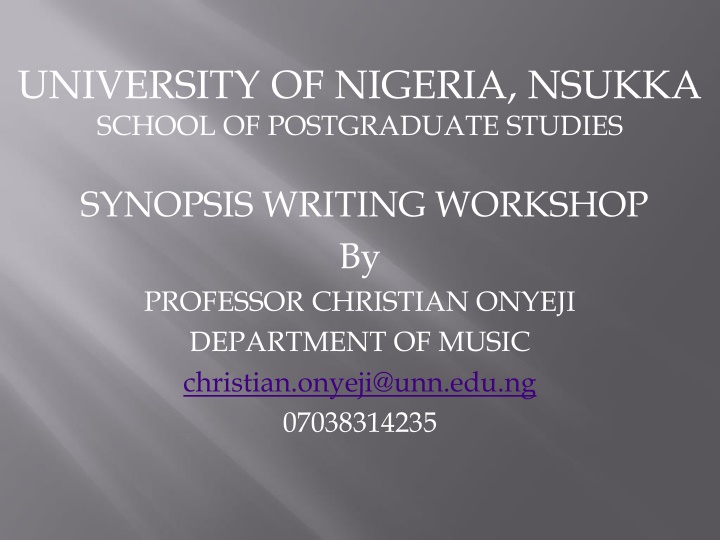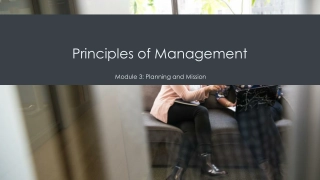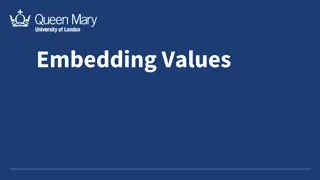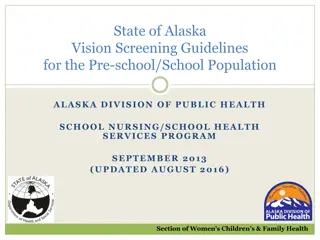St. Matthew's School Vision & Values
St. Matthew's School is dedicated to creating an outstanding educational environment based on Gospel Values. We aim to nurture learners, promote curiosity, and develop independent thinkers who embrace challenges. Our school values include Faith, Honesty, Integrity, Respect, Responsibility, Forgiveness, and Friendship. We strive to provide high-quality teaching, a wide range of learning experiences, and a supportive community where everyone is valued, respected, and encouraged to reach their full potential.
Download Presentation

Please find below an Image/Link to download the presentation.
The content on the website is provided AS IS for your information and personal use only. It may not be sold, licensed, or shared on other websites without obtaining consent from the author.If you encounter any issues during the download, it is possible that the publisher has removed the file from their server.
You are allowed to download the files provided on this website for personal or commercial use, subject to the condition that they are used lawfully. All files are the property of their respective owners.
The content on the website is provided AS IS for your information and personal use only. It may not be sold, licensed, or shared on other websites without obtaining consent from the author.
E N D
Presentation Transcript
UNIVERSITY OF NIGERIA, NSUKKA SCHOOL OF POSTGRADUATE STUDIES SYNOPSIS WRITING WORKSHOP By PROFESSOR CHRISTIAN ONYEJI DEPARTMENT OF MUSIC christian.onyeji@unn.edu.ng 07038314235
GOALS AND OBJECTIVES The University of Nigeria requires doctoral students to present synopsis of their thesis, following a certain format, for evaluation by a committee of the School of Postgraduate Studies Board. At the end of this workshop, it is expected that participants would have gained insights into technicalities of writing acceptable synopsis. It is also hoped that participants would have developed the required skill to write their own synopsis when they are required to do so. the requirements and
DEFINITION OF SYNOPSIS A TECHNICAL SUMMARY OF A THESIS OR DISSERTATION USING A SPECIFIC FORMAT PRESCRIBED BY THE SCHOOL OF POSTGRADUATE STUDIES OF UNIVERSITY OF NIGERIA BACKGROUND OF THE PREVIOUS AND CURRENT FORMATS SUBMISSION TIME
SYNOPSIS WRITING SYNOPSIS WRITING Formatting (Technical structure) Title (Constructing acceptable title) Introduction (Presenting strong background, definitions and arguments) Methodology (The research design, procedure and analytical process) Expected Result (Presentation of findings and facts)
FORMATTING PAGE NUMBER: >Two A4 pages maximum >Must include the signatories at the end in this order: Student; Supervisor, Head of Department and Faculty PG Rep. >Signatories must not be in bold font >1 on both right and left margins >1 on the top and lower margins FONT SIZE: >11 point Times New Roman for the body of the work
The preliminaries must however be in the following font sizes: >14 for University of Nigeria >12 for School of postgraduate Studies >11 for Application of approval of title >12 for others >12 for Synopsis >Preliminaries must be in bold font >Student particulars must be properly aligned >The student particulars must indicate correct student name, registration number, Department, Faculty, Degree in view, Expected year of graduation and the proposed title of Thesis or Dissertation
LINE SPACING: >1.3 between the subheadings and the body >1.3 in the body of the work >Double line spacing between the sub-sections >Double line spacing between the preliminary section and the synopsis SIGNATORIES: >All signatories must have their signatures, names and dates
TITLE OF A SYNOPSIS Note that you are to present a proposed title of the thesis for approval before the actual research is undertaken The title must not be preceded with articles such as: the, an, a, etc. The title must include the operational words, the predicates, context of the research, scope of the study and the time frame of the study (if applicable)
>The title must not exceed 25 words but 16 or less should be the target >The title must be well constructed, smart and precise >Avoid verbose title construction that creates ambiguity >Note that people outside your discipline may be interested in your work >Give them access to your thoughts and ideas through your choice of words
Example 1 Sample titles for discussion An Evaluation of Awareness and use of Social Media in the South-south Geo-political Zone of Nigeria, 2000-2015 The Significance of Goddesses of Fecundity among the Nsukka People of Enugu State, Nigeria >Note that the first letters of the operational words are in caps. >Note also that the titles start with the articles an and the which are not allowed >Discuss the two titles based on what has been learnt. >Present your own examples.
INTRODUCTION The introduction of a synopsis must have the following: >Background of the study >Definition of operational words >Argument for the study leading to the establishment of knowledge gap the study intends to address >Aim of the study drawn from the title of the study >Avoid reference to results or findings in the introduction
>Specific objectives that must indicate the precise research activities that would be undertaken >Objectives must be separated with colon and numbered using Roman numerals in brackets (: (i) , (ii) , etc.) >Ensure the relevance of the number and the quality of the specific objectives in relation to the research title >Avoid duplication of ideas in the specific objectives >Your use of language must be scholarly, professional and well structured (you may employ the services of a language editor)
>The introduction is written in present continuous tense >The objectives would be presented in future tense >Avoid the use of the word examine if it is not what was done. >Words such as determine or ascertain are often preferred but it all depends on the nature of the research to be done >Your objectives can stand on their own or run on a stem (such as to ascertain 1, 2, 3, etc objectives)
METHODOLOGY >Summarizes how the research would be carried out and the processes to be applied >Must show the following: *The research design (such as survey, historical, descriptive, experimental, creative, etc.) *The research context and population to be used *Sampling technique (random, multi-stage, purposive, etc) to be applied *Research sample must be at least, 10% of the actual population
>Short description of how the research design would be applied to the research >Instrument(s) for data collection to be used and summary of the structure >How such instrument would be validated by at least three experts (in the case of questionnaire) >How it would be administered to the respondents >How it would be retrieved >Data analytical tools to be employed and the acceptance of the research outcome
EXPECTED RESULTS >Because this is expected results, it will be written in a manner that reflects probability or possibility >It would be written in future tense >It would, however, show the result expected for each specific objective >The result could be modified after the research has been carried out but must give some idea of the direction of the work
>Supervisors would play critical roles in maintaining the direction of the research result once the synopsis is approved >This would include ensuring that the fine statistics are presented in line with the chosen research methodology and that the stated objectives are addressed
DISCUSSIONS ON SAMPLE SYNOPSIS QUESTIONS COMMENTS SUGGESTIONS























